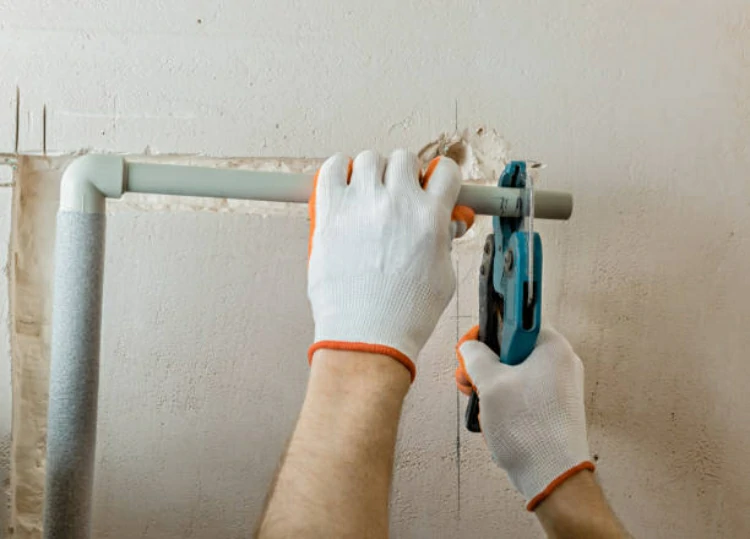Introduction to PPR Tube
PPR Tube are widely used in plumbing and industrial applications. Known for their durability and versatility, PPR Tube are preferred in many settings. Understanding their pressure resistance is crucial for optimizing their use in various applications.
Basic Characteristics of PPR Tube
PPR Tube are made from a random copolymer of polypropylene. This material provides excellent chemical resistance, thermal stability, and mechanical strength. These characteristics make it suitable for hot and cold water systems, as well as industrial applications.
Structure of PPR Tube
PPR Tube consist of three layers: the inner layer, the middle layer, and the outer layer. The inner layer ensures smooth fluid flow, the middle layer provides strength and pressure resistance, and the outer layer offers protection from external factors.
Pressure Rating of PPR Tube
PPR Tube come with various pressure ratings, typically measured in PN (Pressure Nominal). Common pressure ratings include PN10, PN16, PN20, and PN25. These ratings indicate the maximum pressure the pipes can withstand at a specific temperature, usually 20°C.
Testing Pressure Resistance
Manufacturers test PPR Tube for pressure resistance using standardized methods. These tests involve applying internal pressure to the pipe and measuring its response. Pipes must withstand the specified pressure for a set duration without failure.
Factors Affecting Pressure Resistance
Several factors influence the pressure resistance of PPR Tubes. These include the pipe’s wall thickness, diameter, and material quality. The installation environment and operating conditions also impact the pipe’s pressure resistance.
Importance of Wall Thickness
Wall thickness significantly affects a PPR pipe’s pressure resistance. Thicker walls provide higher pressure resistance, ensuring the pipe can handle greater internal pressures. Choosing the correct wall thickness is crucial for meeting system requirements.
Temperature Influence on Pressure Resistance
Temperature plays a critical role in a PPR pipe’s pressure resistance. Higher temperatures reduce the pipe’s pressure resistance. For instance, a pipe rated PN20 at 20°C may have a lower pressure rating at 60°C. Engineers must consider temperature effects when designing systems.
Long-Term Pressure Performance
PPR Tube offer excellent long-term pressure performance. They maintain their mechanical properties over extended periods, even under continuous pressure. This longevity makes PPR Tube a reliable choice for various applications.
Installation Guidelines for Optimal Pressure Resistance
Proper installation ensures optimal pressure resistance of it. Follow manufacturer guidelines for cutting, joining, and supporting the pipes. Avoid over-tightening fittings and ensure proper alignment to prevent stress points.
Common Applications Requiring High Pressure Resistance
High pressure resistance is essential in several applications. These include high-rise building plumbing, industrial fluid systems, and heating installations. PPR Tubes ability to withstand high pressures makes them ideal for these demanding environments.
Advantages of High Pressure Resistance
PPR Tube with high pressure resistance offer numerous advantages. They ensure system reliability, reduce maintenance needs, and prevent leaks and bursts. These benefits translate to lower operating costs and enhanced safety.
PPR Tube Comparing PPR Tube with Other Materials
Compared to other materials like PVC and metal, PPR Tubes offer superior pressure resistance. Metal pipes may corrode, and PVC pipes may crack under high pressure. It provide a durable, long-lasting solution with minimal maintenance.
Environmental Impact
PPR Tubes contribute to environmental sustainability. Their long lifespan reduces the need for frequent replacements, minimizing waste. PPR materials are also recyclable, supporting eco-friendly practices.
Cost Considerations
While PPR Tube may have a higher initial cost than some alternatives, their durability and low maintenance needs offer long-term savings. The reduced risk of leaks and failures lowers repair and replacement costs.
Safety Considerations
Ensure safety during installation and operation by following proper guidelines. Pressure testing should confirm the pipe’s integrity before use. Regular inspections help maintain system safety and performance.
Innovations in PPR Pipe Technology
Ongoing innovations in PPR pipe technology enhance their pressure resistance and overall performance. Improved materials and manufacturing processes lead to stronger, more reliable pipes. These advancements continue to expand the applications of PPR Tubes.
Conclusion
Understanding the pressure resistance of PPR Tube is essential for their effective use in plumbing and industrial systems. Their high pressure resistance, durability, and environmental benefits make them a superior choice for various applications. By following proper installation and maintenance practices, users can maximize the performance and longevity of PPR Tubes.
Contact
IFAN is a professional manufacturer with 30 years of experience, dedicated to producing high-quality plastic pipes, fittings, and valves. Our products include brass valves, PPR valves, as well as various pipes and fittings to meet different customer needs. Whether you need plumbing and drainage pipes or valve products, IFAN can provide a diverse range of high-quality, cost-effective products to support your projects. Below is our contact information.
We will reply your email or fax within 24 hours.
You can call us at any time if there is any question on our production.
For more information,pls visit our webside https://www.ifanplus.com/
Pls Mailto: [email protected]






